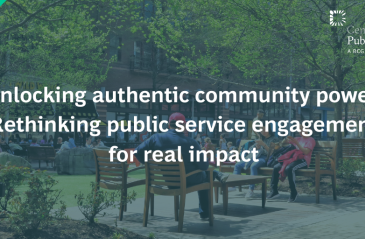
The power of storytelling in climate leadership

Hong Kong maximises the value of its real estate by constructing offices across its metro
Share articleMany essential services that are hard-wired into each procurement can cause significant costs
Share articlePolitical courage is an essential trait for any reforming leader
Share articleWe put our vision for government into practice through learning partner projects that align with our values and help reimagine government so that it works for everyone.
Gullmarsplan is a local metro station in Stockholm. It's just one of 100 stations that are scattered across the city and, to the casual observer, has little to distinguish it from the others. But therein lies the problem.
In actual fact, this station alone has more daily passengers than the number of people who pass through Stockholm's primary airport, Arlanda, every day. But there is only one small coffee shop - the morning queues are quite something - a retail kiosk for newspapers and a small café. Talk about a missed opportunity. Further retail options would release huge new streams of finance for reinvestment elsewhere on the network - thereby saving money for taxpayers and improving the quality of service: public impact personified.
So, what can be done about this? How can the next wave of infrastructure investment in Sweden unlock new sources of funding that can further enhance our transport network?
Working for MTR means that we are very much aware of our employer's Asian roots. But while our metro system in Hong Kong derives three-quarters of its income from sources other than the tickets sold, about 50% of finance in Stockholm comes from ticket revenue and 50% from the taxpayer. Hong Kong - perhaps partly due to the limited land mass available - has succeeded in maximising the value of its station real estate by constructing offices, extensive retail outlets and apartments across its metro system.
In Stockholm, though, we haven't managed to match this level of success and this means that ours is a system that is not self-sustaining. Each additional journey represents an additional burden on the taxpayer and this becomes a paradoxical process which is unable to stimulate the growth that the county and its citizens are hoping for.
This is a particularly acute concern given that recent years have seen Stockholm County - which procures all public transport for its citizens - struggle with a fluctuating budget. At the same time, there has been a rapid rise in the number of passengers, who have high expectations of service quality. How to address these systemic and deep-rooted challenges, and deliver the public impact that we all aspire to, increasingly boils down to how the county runs its procurement processes.
It is not easy, however, to cut costs. A lot of the essential services that are hard-wired into each procurement can be significant cost drivers.
Barriers to change can also be found in the complexity of the procurement system itself. Separate tenders abound - construction, operators, building new apartments - which result in several companies carrying out different parts of the construction and different parts of the maintenance, all overseen by separate functions within local and regional authorities. The number of tenders and stakeholders means that it is very challenging to achieve taxpayer value. No-one has overall control or ultimate responsibility. Solving this problem is crucial for future infrastructure investment, not only in Stockholm but in cities around the world.
A good starting point would be to crack down on the number of tenders for each new infrastructure project and to really use the public-private partnership model. This can enable operator-led infrastructure projects that include operations and maintenance contracts, where the total quality and life cycle cost can be addressed. Government needs to talk to the private sector - and vice versa - before a new tender comes out, in order to streamline the requirements and agree the right scope and cost structure. Similarly, each new tender should include plans to maximise the potential retail areas in each station, such as Gullmarsplan - for new and existing lines. This would, in due course, release new funds to reduce the taxpayers' commitment, while at the same time catering to the rising number of passengers on the system.
But achieving true change, and true public impact, requires political courage. Unfortunately, decision-makers can often get criticised in the media and large-scale reforms involving a myriad of stakeholders will always prompt huge scrutiny. Courage, then, is an essential trait for any leader pushing through a reform.
Also needed is the recognition that government procurement teams need nurturing. In the private sector, any company looking to improve profitability automatically turns to its procurement process. But government procurement teams do not always enjoy sufficient recognition or resources that reflect the importance of their role - managing current procurement projects and suppliers, developing new procurement processes and contracts, and following up on the promised quality of service.
Stockholm has so much going for it. A vibrant city buzz that is matched only by the diversity of our 14 islands and 160km of shoreline. Our transport system, too, has many admirers. But more can be done to make it even better - let's get on track.











